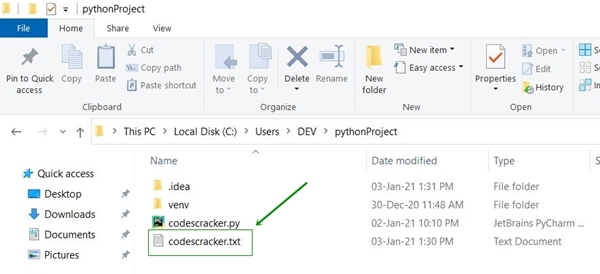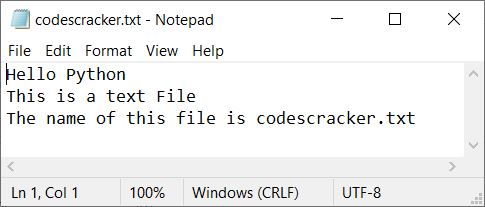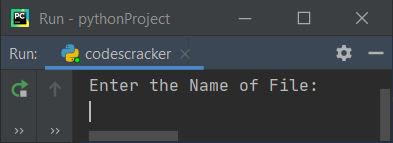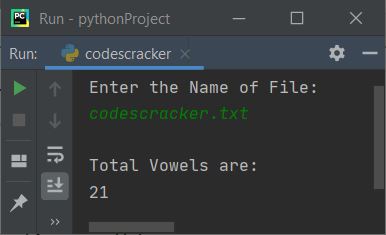- Python Basic Programs
- Python Program Examples
- Python Print Hello World
- Python Get Input from User
- Python Add Two Numbers
- Add Subtract Multiply Divide
- Python Check Even or Odd
- Python Check Prime or Not
- Python Check Alphabet or Not
- Python Check Vowel or Not
- Python Check Leap Year or Not
- Check Reverse equal Original
- Check Positive Negative Zero
- Python Check Armstrong or Not
- Python Check Palindrome or Not
- Python Check Perfect Number
- Python Find Reverse of Number
- Python Count Digits in Number
- Python Add Digits of Number
- Sum of First and Last Digits
- Python Product of Mid Digits
- Sum of Squares of Digits
- Interchange Digits of Number
- Python Sum of n Numbers
- Python Print ASCII Values
- Python Swap Two Numbers
- Python Swap Two Variables
- Python Fahrenheit to Celsius
- Python Celsius to Fahrenheit
- Python Display Calendar
- Python Days into Years, Weeks
- Find Largest of Two Number
- Find Largest of Three Number
- Python Print Fibonacci Series
- Generate Armstrong Numbers
- Python Make Simple Calculator
- Python Add Binary Numbers
- Binary Number Multiplication
- Python Mathematical Programs
- Find Sum of Natural Numbers
- Find Average of n Numbers
- Python Print Multiplication Table
- Print Table using Recursion
- Python Find Average Percentage
- Python Find Grade of Student
- Find Square Root of Number
- Python Print Prime Numbers
- Find Numbers Divisible by
- Python Find Factors of Number
- Python Find Factorial of a Number
- Python Find HCF & LCM
- Python Kilometres to Miles
- Python Find Area of Square
- Python Find Area of Rectangle
- Python Find Area of Triangle
- Python Find Area of Circle
- Python Find Perimeter of Square
- Find Perimeter of Rectangle
- Python Find Perimeter of Triangle
- Find Circumference of Circle
- Python Simple Interest
- Python Solve Quadratic Equation
- Python Different Set of Operations
- Python Display Powers of 2
- Python Find nCr & nPr
- Python Pattern Programs
- Python Print Pattern Programs
- Python Print Diamond Pattern
- Python Print Floyd's Triangle
- Python Print Pascal's Triangle
- Python List Programs
- Python Count Even/Odd in List
- Python Positive/Negative in List
- Python Even Numbers in List
- Python Odd Numbers in List
- Python Sum of Elements in List
- Sum of Odd/Even Numbers
- Python Element at Even Position
- Python Element at Odd Position
- Python Search Element in List
- Python Largest Number in List
- Python Smallest Number in List
- Python Second Largest in List
- Python Second Smallest in List
- Python Insert Element in List
- Python Delete Element from List
- Python Multiply Numbers in List
- Swap Two Elements in List
- Python 1D Array Program
- Python Linear Search
- Python Binary Search
- Python Insertion Sort
- Python Bubble Sort
- Python Selection Sort
- Remove Duplicates from List
- Python Reverse a List
- Python Merge Two List
- Python Copy a List
- Python Conversion Programs
- Python Decimal to Binary
- Python Decimal to Octal
- Python Decimal to Hexadecimal
- Python Binary to Decimal
- Python Binary to Octal
- Python Binary to Hexadecimal
- Python Octal to Decimal
- Python Octal to Binary
- Python Octal to Hexadecimal
- Python Hexadecimal to Decimal
- Python Hexadecimal to Binary
- Python Hexadecimal to Octal
- Python Matrix Programs
- Python Add Two Matrices
- Python Subtract Two Matrices
- Python Transpose Matrix
- Python Multiply Matrices
- Python String Programs
- Python Print String
- Python Find Length of String
- Python Compare Two Strings
- Python Copy String
- Python Concatenate String
- Python Reverse a String
- Python Swap Two Strings
- Python Uppercase to Lowercase
- Python Lowercase to Uppercase
- Python Check Substring in String
- Python Count Character in String
- Count Repeated Characters
- Python Count Word in Sentence
- Python Count Each Vowels
- Python Capitalize Character
- Python Capitalize Word in String
- Python Smallest/Largest Word
- Remove Spaces from String
- Remove Duplicate Character
- Remove Vowels from String
- Remove Punctuation from String
- Python Remove Word in String
- Python Remove Duplicate Words
- WhiteSpace to Hyphens
- Replace Vowels with Character
- Replace Character in String
- Python Sort String in Alphabetical
- Sort Word in Alphabetical Order
- Extract Number from String
- Python Check Anagram Strings
- Python File Programs
- Python Read a File
- Python Write to File
- Python Append Text to File
- Python Copy Files
- Python Merge Two Files
- Python Counts Characters in File
- Python Count Words in File
- Python File Content in Reverse
- Python Lines Contains String
- Python Delete Line from File
- Python Capitalize Word in File
- Python Replace Text in File
- Replace Specific Line in File
- Python Find Size of File
- Python List Files in Directory
- Python Delete Files
- Python Misc Programs
- Python Reverse a Tuple
- Python Merge Two Dictionary
- Python bytes to String
- Python bytearray to String
- Generate Random Numbers
- Python Print Address of Variable
- Python Print Date and Time
- Python Get IP Address
- Python Shutdown/Restart PC
- Python Tutorial
- Python Tutorial
Python Program to Count Vowels, Lines, Characters in Text File
This article is created to cover many programs in Python related to counting of characters such as vowels, consonants, newline, blank space etc. in a given or entered text file by user at run-time. Here are the list of programs covered in this article:
- Count vowels in a text file
- Count consonants in a text file
- Count new lines in a text file
- Count blank spaces in a text file
- Count total/all characters in a text file
Before moving on to the programs, let's do some important things to implement and execute the program based on text file.
Things to do Before Program
Because the program given below is used to count characters in a text file. Therefore first we've to create a text file say fresherearth.txt with some contents say:
Hello Python This is a text File The name of this file is fresherearth.txt
Save this file inside the current directory. The current directory is the directory where the Python code to count characters of this file is saved. Here is the snapshot of the folder where the file fresherearth.txt is saved:

And here is the snapshot of opened file fresherearth.txt:

Now let's create some Python programs to do the task like counting of characters, vowels, spaces etc. of this text file.
Count Vowels in Text File
The question is, write a Python program to count number of vowels present in a file. The program given below is the answer to this question:
print("Enter the Name of File: ") fileName = str(input()) fileHandle = open(fileName, "r") tot = 0 vowels = ['a', 'e', 'i', 'o', 'u', 'A', 'E', 'I', 'O', 'U'] for char in fileHandle.read(): if char in vowels: tot = tot+1 fileHandle.close() print("\nTotal Vowels are:") print(tot)
Here is its sample run:

Now enter the name of file say fresherearth.txt (a newly created file as early of this article) and press
ENTER to count and print total number of vowels present in the content of this file as shown in the snapshot given below:

Modified Version of Previous Program
Let's modify the previous program. This program uses end to skip printing of an automatic newline. The try-except block is used for exception handling.
print(end="Enter the Name of File: ") fileName = str(input()) try: fileHandle = open(fileName, "r") tot = 0 vowels = ['a', 'e', 'i', 'o', 'u', 'A', 'E', 'I', 'O', 'U'] for char in fileHandle.read(): if char in vowels: tot = tot+1 fileHandle.close() if tot>1: print("\nThere are " + str(tot) + " Vowels available in the File") elif tot==1: print("\nThere is only 1 Vowel available in the File") else: print("\nThere is no any Vowel available in the File!") except IOError: print("\nError Occurred!") print("Either File doesn't Exist or Permission is not Allowed!")
Here is its sample run with same user input say fresherearth.txt as file's name:

Here is another sample run with user input say temp.txt (a non-existing file):

Count Consonant in Text File
The question is, write a program in Python that counts total consonants available in a text file. Here is its answer:
print(end="Enter the Name of File: ") fileName = str(input()) try: fileHandle = open(fileName, "r") tot = 0 vowels = ['a', 'e', 'i', 'o', 'u', 'A', 'E', 'I', 'O', 'U'] for char in fileHandle.read(): if char>='a' and char<='z': if char not in vowels: tot = tot+1 elif char>='A' and char<='Z': if char not in vowels: tot = tot+1 fileHandle.close() if tot>1: print("\nThere are " + str(tot) + " Consonants available in the File") elif tot==1: print("\nThere is only 1 Consonant available in the File") else: print("\nThere is no any Consonant available in the File!") except IOError: print("\nError Occurred!")
Here is its sample run with same file name say fresherearth.txt:

This program is similar to the previous program. The only difference is in logical code, we've changed the following code:
if char in vowels: tot = tot+1
with the block of code given below:
if char>='a' and char<='z': if char not in vowels: tot = tot+1 elif char>='A' and char<='Z': if char not in vowels: tot = tot+1
Count New Lines in Text File
To count the number of new lines in a text file, use following Python program:
print(end="Enter the Name of File: ") fileName = str(input()) try: fileHandle = open(fileName, "r") tot = 0 for char in fileHandle.read(): if char=='\n': tot = tot+1 fileHandle.close() if tot>1: print("\nThere are " + str(tot) + " New Lines available in the File") elif tot==1: print("\nThere is only 1 New Line available in the File") else: print("\nThere is no any New Line available in the File!") except IOError: print("\nError Occurred!")
Here is its sample run with same file name as created earlier:

The only difference with this program to the program given to count vowels in text file is, we've changed the following block of code:
if char in vowels: tot = tot+1
with the block of code given below:
if char=='\n': tot = tot+1
Count Blank Spaces in Text File
This program counts total number of blank spaces available in a text file entered by user at run-time.
print(end="Enter the Name of File: ") fileName = str(input()) try: fileHandle = open(fileName, "r") tot = 0 for char in fileHandle.read(): if char==' ': tot = tot+1 fileHandle.close() if tot>1: print("\nThere are " + str(tot) + " Blank spaces available in the File") elif tot==1: print("\nThere is only 1 Blank space available in the File") else: print("\nThere is no any Blank space available in the File!") except IOError: print("\nError Occurred!")
The snapshot given below shows the sample run of this program with again same file name, fresherearth.txt:

Count Total Characters in Text File
This is the last program of this article. This program is created to count all the characters or total number of characters available in a text file.
print(end="Enter the Name of File: ") fileName = str(input()) try: fileHandle = open(fileName, "r") tot = 0 for char in fileHandle.read(): if char: tot = tot+1 fileHandle.close() if tot>1: print("\nThere are " + str(tot) + " Characters available in the File") elif tot==1: print("\nThere is only 1 Character available in the File") else: print("\nThe File is empty!") except IOError: print("\nError Occurred!")
Here is its sample run:

Note - Out of 74 characters, there are 21 vowels, 39 consonants, 11 blank spaces, 2 new lines and 1 dot (.)
« Previous Program Next Program »